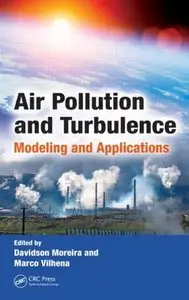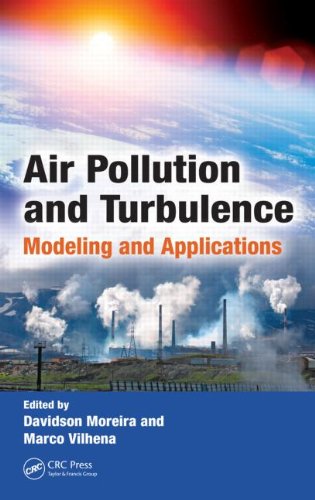Air Pollution and Turbulence: Modeling and Applications by Davidson Moreira, Marco Vilhena
English | 2009 | ISBN: 143981144X | 354 pages | PDF | 31,5 MB
English | 2009 | ISBN: 143981144X | 354 pages | PDF | 31,5 MB
Since its discovery in early 1900, turbulence has been an interesting and complex area of study. Written by international experts, Air Pollution and Turbulence: Modeling and Applications presents advanced techniques for modeling turbulence, with a special focus on air pollution applications, including pollutant dispersion and inverse problems.
The book’s foreword was written by specialists in the field, including the Professor Sergej Zilitinkevich. Offering innovative atmospheric mathematical modeling methods, which can also be applied to other disciplines, the book includes:
Discussions on the effects of soot and diesel particulates on building surfaces and human health Observational studies of convective Atmospheric Boundary Layer (ABL) over pastures and forests in Amazonia Theoretical studies of turbulence and turbulent transport modeling of contaminants during the decaying of a ABL convective The parameterization of convective turbulence and clouds in atmospheric models based on the combination of the eddy-diffusivity and mass-flux approaches Analytical solutions to the advection-diffusion equation and analytical models for air pollution, including those for low wind conditions Analytical solutions to the advection-diffusion equation using the Generalized Integral Laplace Transform Technique (GILTT) and the decomposition method Lagrangian stochastic dispersion models with applications for airborne dispersion in the ABL Atmospheric dispersion with Large Eddy Simulation (LES) using the Lagrangian and Eulerian approaches Modeling of photochemical air pollution for better air quality management Analysis of the transport of a trace gas (CO2) at the global scale and overviews of the inverse-problem techniques for deducing emissions from known concentrations
The book provides a solid theoretical understanding of turbulence and includes cases studies that illustrate subjects related to environmental sciences and environmental modeling. It reflects and summarizes recent developments in key areas of modeling atmospheric turbulence and air pollution. It pulls together information on techniques and methods used on turbulence, air pollution, and applications. While these topics are often covered separately, this book’s combined coverage of all three areas sets it apart.



